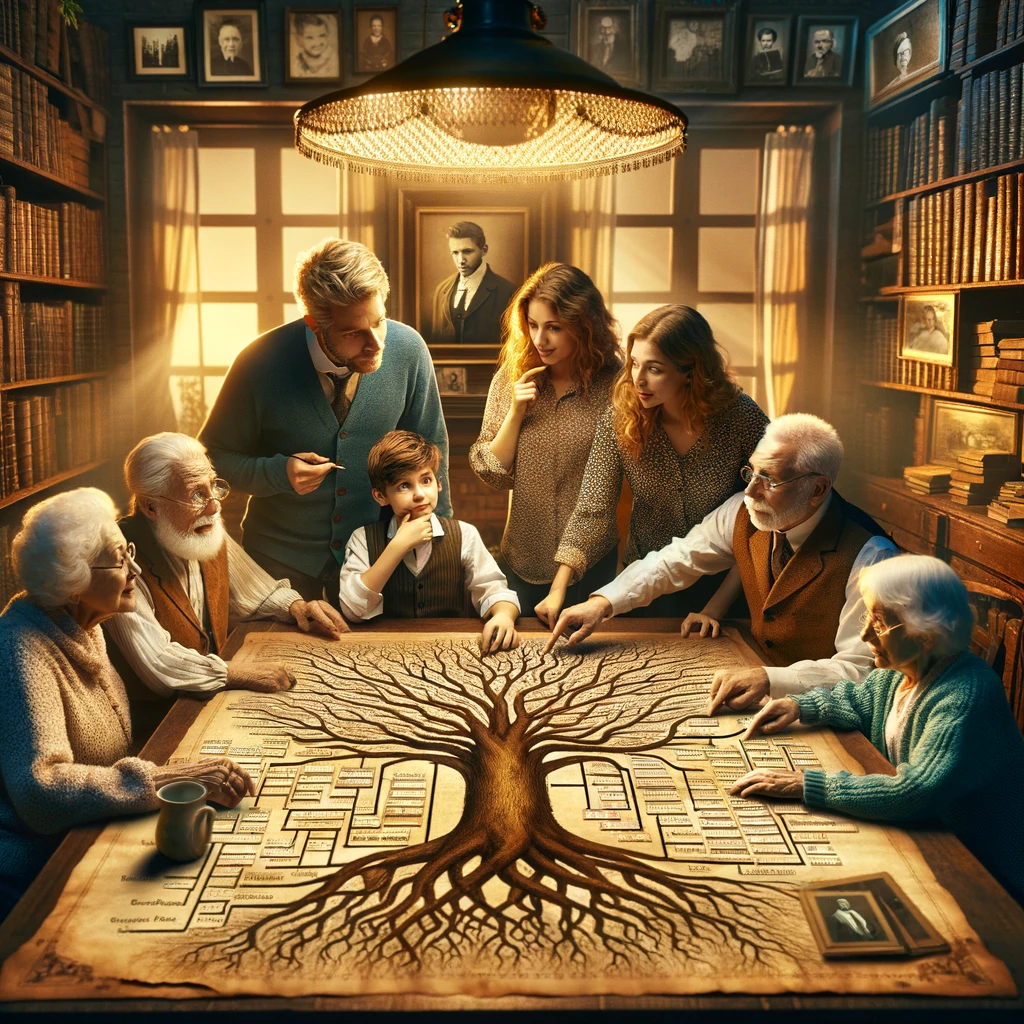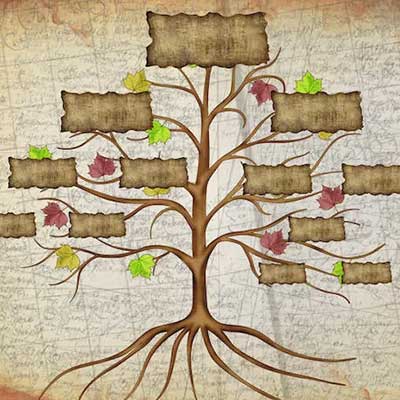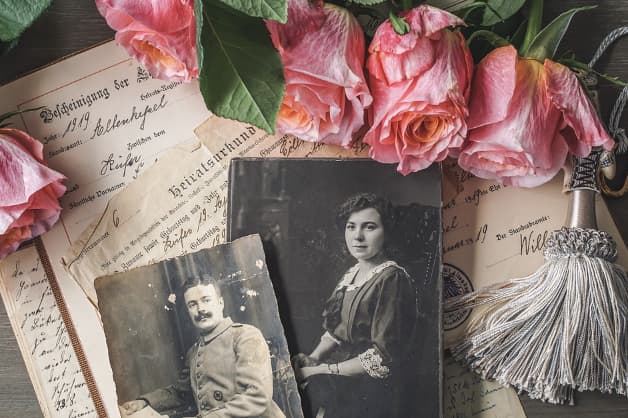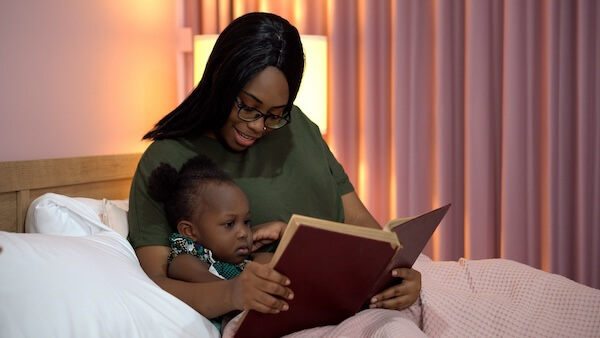- Home
- Family Legacy Documentary
Making A Family Legacy Documentary
Imagine capturing the precious moments and stories of your family's unique journey. A family legacy documentary allows you to encapsulate these memories forever, preserving them for generations. It's a heartfelt way to celebrate your loved ones, offering an intimate glimpse into the lives and experiences that have shaped you. From the laughter-filled gatherings to tear-jerking milestones, a family documentary is an extraordinary and authentic tribute to the incredible bond of kinship. Let your family's story be told and cherished through documentary filmmaking.
Family Legacy Documentary
A family legacy documentary is a powerful way to preserve and celebrate your family's history, stories, and memories. It is a creative and engaging project that allows you to capture and showcase the unique experiences and perspectives of your loved ones. This comprehensive guide will explore the benefits of creating a family documentary and provide practical tips and advice on planning, filming, editing, and sharing your own family documentary.
What is a Family Legacy Documentary?
A family legacy documentary is a film or video project that documents a family's life, history, and stories. It can encompass various elements, such as interviews, archival footage, photographs, and personal narratives, to create a comprehensive and engaging portrayal of a family's journey. Family documentaries offer a way to capture and preserve memories, traditions, and the essence of your family for future generations.
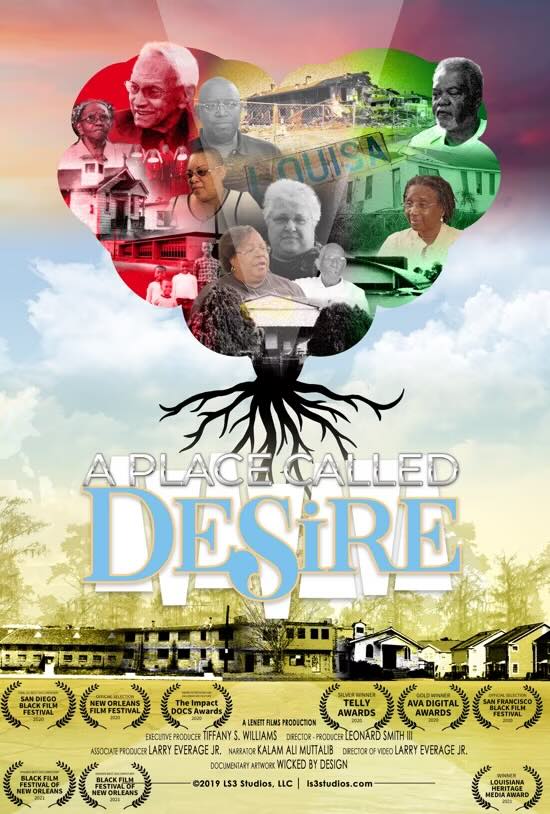 A Place Called Desire Movie Poster
A Place Called Desire Movie PosterBenefits of Creating a Family Legacy Documentary
One of the primary benefits of creating a family documentary is preserving your family's history. You can ensure that valuable stories and information are preserved over time by recording interviews with older family members, capturing anecdotes, and archiving essential family documents and photographs. A family history documentary is a historical record that can be cherished and passed down through generations.
Creating a family documentary is a collaborative and immersive experience that can strengthen the bonds between family members. Working together towards a common goal fosters a sense of unity and shared purpose. Discussing family history, reminiscing about past events, and reflecting on shared experiences can deepen your understanding and connection with your loved ones.
Sharing Memories with Future Generations
A family documentary is an extraordinary gift to future generations. It allows your children, grandchildren, and even great-grandchildren to gain insight into their family's history and heritage. By sharing family stories, traditions, and values through a documentary, you pass down a legacy that will be cherished for years.
Capturing Personal Stories and Reflections
Each family member has a unique perspective and story to share. A family documentary allows individuals to express themselves, share their memories, and reflect on their experiences. By giving everyone a voice and platform to be heard, a family documentary becomes a powerful tool for self-expression and self-discovery.
Planning and Preparing for a Family Legacy Documentary
The success of a family documentary largely depends on thoughtful planning and preparation. Before diving into the filming and editing process, consider the following steps:
Identifying the Purpose and Scope
First and foremost, could you explain the purpose and scope of your family documentary? Could you determine what aspects of your family's history, traditions, or stories you want to focus on? This will help you establish a clear direction for your project and ensure that your documentary remains focused and engaging.
Forming the Production Team
Creating a family documentary can be a collaborative effort that involves multiple family members. Consider who in your family has the necessary skills and interests to contribute to the project. Assign roles and responsibilities based on each person's strengths and interests. Remember, the more involvement you have from various family members, the richer and more diverse the documentary will be.
Choosing the Documentary Style
There are various documentary styles, such as chronological, thematic, or a combination. Could you choose the style best suits your family's story and objectives? This will serve as a guiding framework for organizing your footage and structuring your documentary.
Conduct thorough research on your family's history to ensure accuracy and depth in your family documentary. Look through photo albums, family archives, and documents to gather relevant information and visual material. Reach out to older family members to gather their perspectives and insights. This research phase will provide a strong foundation for your documentary.
Once you have gathered the necessary information, develop an outline for your family documentary. Determine the key themes, events, or stories you want to feature and arrange them logically and engagingly. This outline will serve as a blueprint for your filming and editing process.

Preparing Interview Questions
Interviews are a crucial component of a family documentary. Prepare a list of thoughtful, open-ended questions that will elicit meaningful responses from your family members. Tailor the questions to each individual and their specific experiences. Remember to be sensitive and respectful while interviewing family members, as some topics may be emotionally charged.
In addition to interviews, a family documentary can benefit from including visual material, such as family photographs, home videos, and archival footage. Could you gather these materials to match your documentary's structure and narrative? and organize the visual material to add depth, context, and emotional impact to your family documentary.
Filming and Interviewing
With the planning and preparation phases complete, it's time to move on to the filming and interviewing. Follow these steps to capture high-quality footage and compelling interviews:
Choose meaningful and relevant locations to your family's history and stories. Consider filming at significant family landmarks, such as ancestral homes, favorite vacation spots, or places with sentimental value. The locations you select will enhance your documentary's visual and emotional impact.
Pay attention to the technical aspects of filming, such as camera positioning, lighting, and sound. Ensure that the camera is stable and captures clear and steady footage. Position your subjects in well-lit areas, avoiding harsh shadows or extreme backlighting. Good lighting and sound quality are essential for creating a visually appealing and professional-looking family documentary.
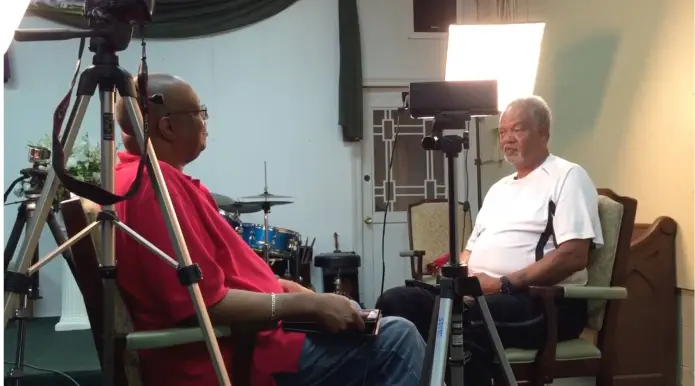 Leonard Smith III of LS3 Studios is interviewing Kirk Stevens for A Place Called Desire documentary.
Leonard Smith III of LS3 Studios is interviewing Kirk Stevens for A Place Called Desire documentary.Experiment with different shooting techniques and compositions to add visual interest to your footage. Use establishing shots to set the scene and convey a sense of place. Incorporate close-ups to capture the emotions and expressions of your family members. Be mindful of composition and framing to ensure that the visual elements support the story you want to tell.
When conducting interviews, create a comfortable and relaxed environment for your family members. Start with some casual conversation to help them relax and feel at ease. Ask open-ended questions that encourage thoughtful and detailed responses. Be an active listener and show genuine interest in their stories. Remember to give your subjects enough time to reflect and respond.
In addition to interviews, capture b-roll footage to enhance your family documentary. B-roll includes shots of your family engaged in activities, details of the environment, and other visual elements that provide context and support the narrative. B-roll footage adds visual variety and depth to your documentary, making it more engaging and dynamic.
Editing and Post-production
The editing and post-production process is where your family documentary truly comes to life. Follow these steps to create a cohesive and compelling final product:
Transfer your filmed footage to a computer or a designated editing device. Create a well-organized folder structure to keep your footage organized and easily accessible. Label your footage correctly, making it easy to locate specific clips when editing.
You can start assembling the documentary's narrative by referencing your previously developed outline. Arrange the footage and interviews in a way that creates a logical and engaging story. Begin with an attention-grabbing introduction that hooks the viewers and progresses through the key themes of your documentary. Ensure a smooth flow between scenes and a clear progression of ideas.
During the editing process, use various editing techniques to enhance the visual appeal of your family documentary. Experiment with color grading to evoke specific emotions or establish a particular mood. Incorporate transitions between scenes to create seamless transitions. Utilize overlays, text, or graphics to provide additional information or context.
Consider adding music and sound effects to enhance the emotional impact of your family documentary. Choose a piece that complements the tone and theme of each scene. Be mindful of copyright restrictions and ensure you have the right to use the chosen music or sound effects. Music and sound effects can elevate the viewing experience and create a more immersive atmosphere.
Integrate the interviews and voiceovers that you conducted earlier into the editing process. Carefully select the most poignant and insightful snippets to include in your family documentary. These personal narratives and reflections will add depth, authenticity, and emotional resonance to your project.
Once you have edited and fine-tuned your family documentary, review it multiple times to ensure it meets your standards and objectives. Pay attention to the final product's pacing, coherence, and overall impact. Make any necessary adjustments or refinements before exporting the documentary.
Sharing and Preserving the Family Documentary
After completing the editing process, it's time to share and preserve your family documentary. Consider the following steps to ensure your documentary reaches a broad audience and remains accessible for years to come:
Identify the most suitable distribution channels for your family documentary. You can share it privately within the family, host a public screening, or seek opportunities to showcase it at film festivals or community events. Consider online platforms like YouTube or Vimeo that allow for easy sharing and accessibility.
If you prefer a physical format, create DVD copies of your family legacy documentary. This allows you to distribute copies to family members, archives, or libraries, ensuring that your documentary is preserved for future generations.
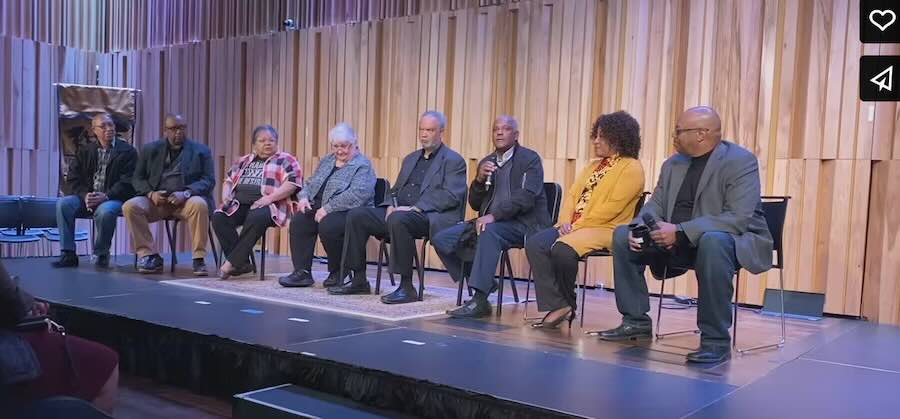 A Place Called Desire private screening panel discussion.
A Place Called Desire private screening panel discussion.Consider uploading your family history documentary to online platforms to reach a broader audience. Please share it on social media or create a dedicated website or blog for your documentary. This allows family members, friends, and even strangers with a shared interest to discover and enjoy your project.
Celebrate the completion of your family documentary by organizing a premiere or viewing party. Gather your family, friends, and anyone who contributed to the documentary to watch it together. This creates a sense of community and appreciation for the hard work and dedication that went into creating the documentary.
Ensure the long-term preservation of your family documentary by backing up the project files, footage, and final edit—store copies on multiple devices, such as external hard drives or cloud storage services. Regularly update and maintain these backups to protect against potential loss or damage.
Examples of Family Documentaries
Explore examples of successful and impactful projects to gain inspiration and insight into family documentaries. Look for documentaries that resonate with your family's values, history, or experiences. Analyze these documentaries' storytelling techniques, visual style, and structure to inform and inspire your family documentary.
Challenges and Tips for Successful Family Documentaries
While creating a family documentary can be a rewarding experience, it may also come with its fair share of challenges. Here are some common challenges and tips to ensure the success of your family documentary:
Some family members may be reluctant to participate in a family documentary due to shyness or privacy concerns. Be patient, empathetic, and understanding in addressing their concerns. Explain the importance and value of preserving family history. Encourage open dialogue and allow family members to participate based on their comfort levels.
Technology can present challenges throughout the filming and editing process. Technical difficulties, such as camera malfunctions or software crashes, can be frustrating. Keep calm, consult online resources, or seek expert assistance if needed. Be prepared for unexpected setbacks and maintain a flexible mindset to overcome technical challenges.
Creating a family documentary requires time and resources. Set a realistic timeline and allocate a budget for your project. Consider the availability and schedules of family members involved. Prioritize important interviews or events to ensure efficient time management—research cost-effective or accessible editing software and equipment options to align with your budget.
As the filmmaker, staying objective, authentic, and respectful when telling your family's story is essential. Remain neutral and unbiased during interviews, allowing each family member to express their unique perspective. Be mindful of the potential biases or subjectivity you may bring, and strive for fairness and accuracy in your documentary.
Creating a family documentary is a journey that allows you to celebrate, preserve, and honor your family's history and stories. With careful planning, passionate storytelling, and attention to detail, you can create a meaningful and impactful documentary that future generations will cherish. Follow the steps outlined in this comprehensive guide, embrace the challenges, and enjoy the process of documenting your family's unique narrative.



